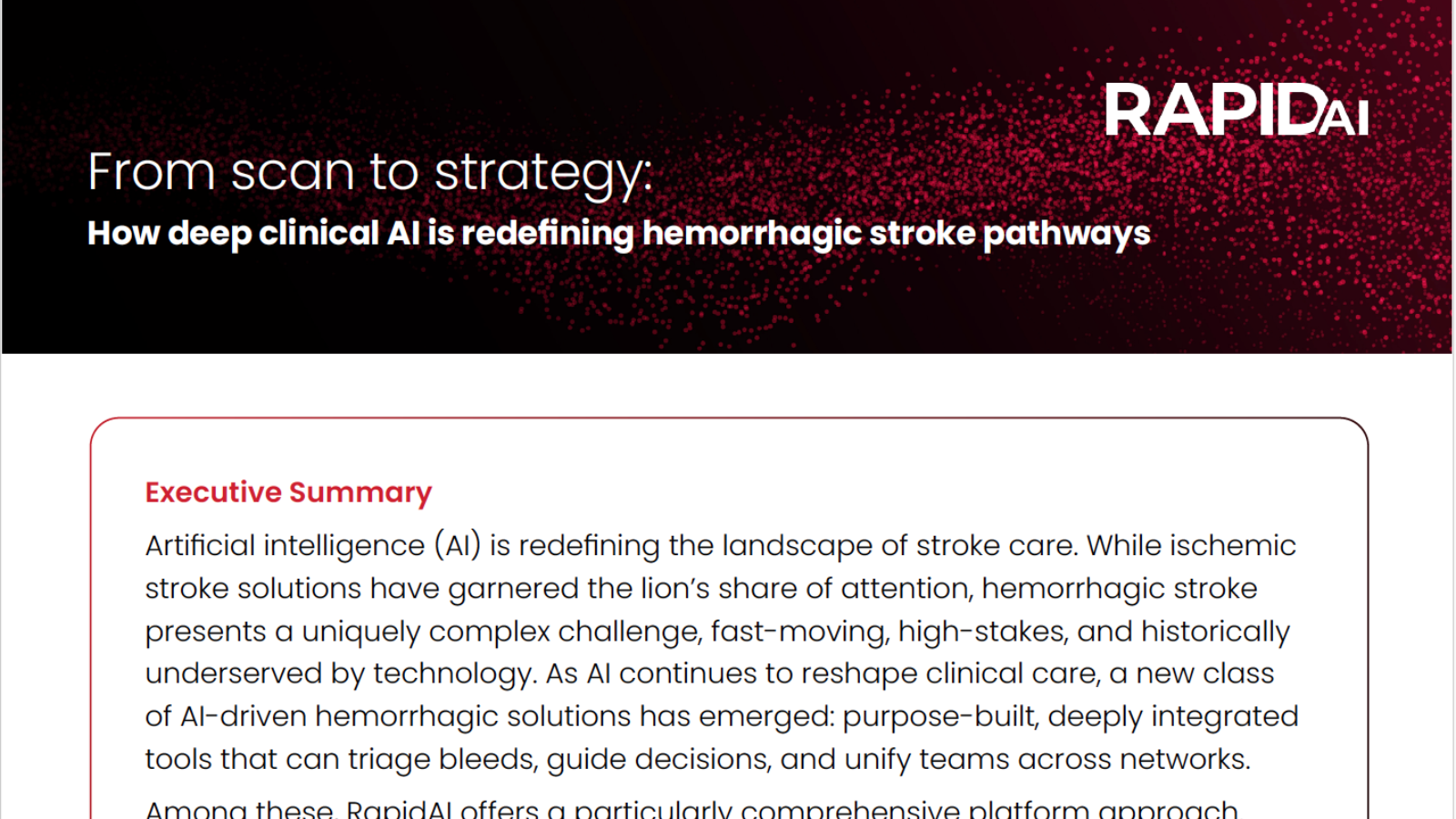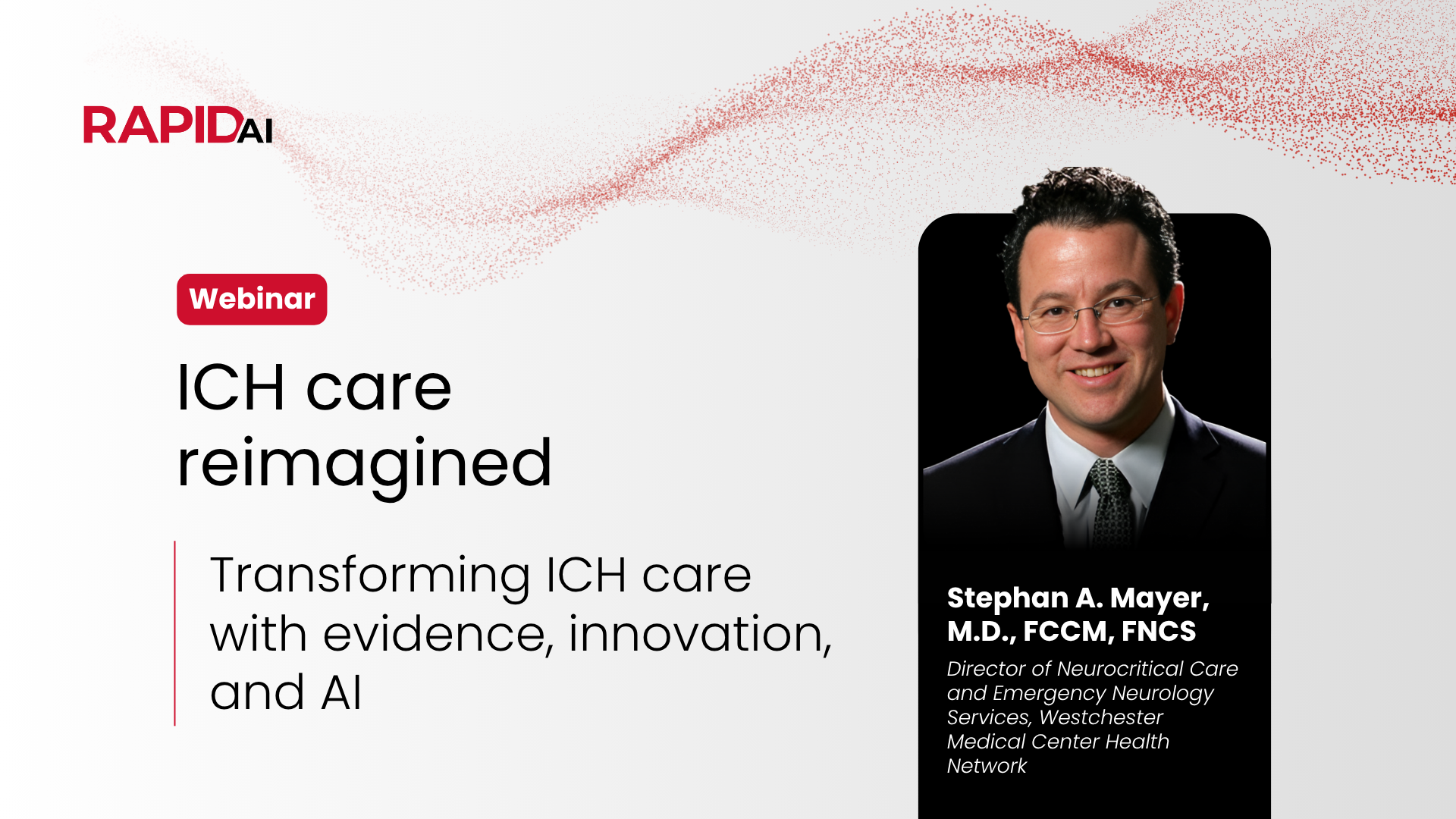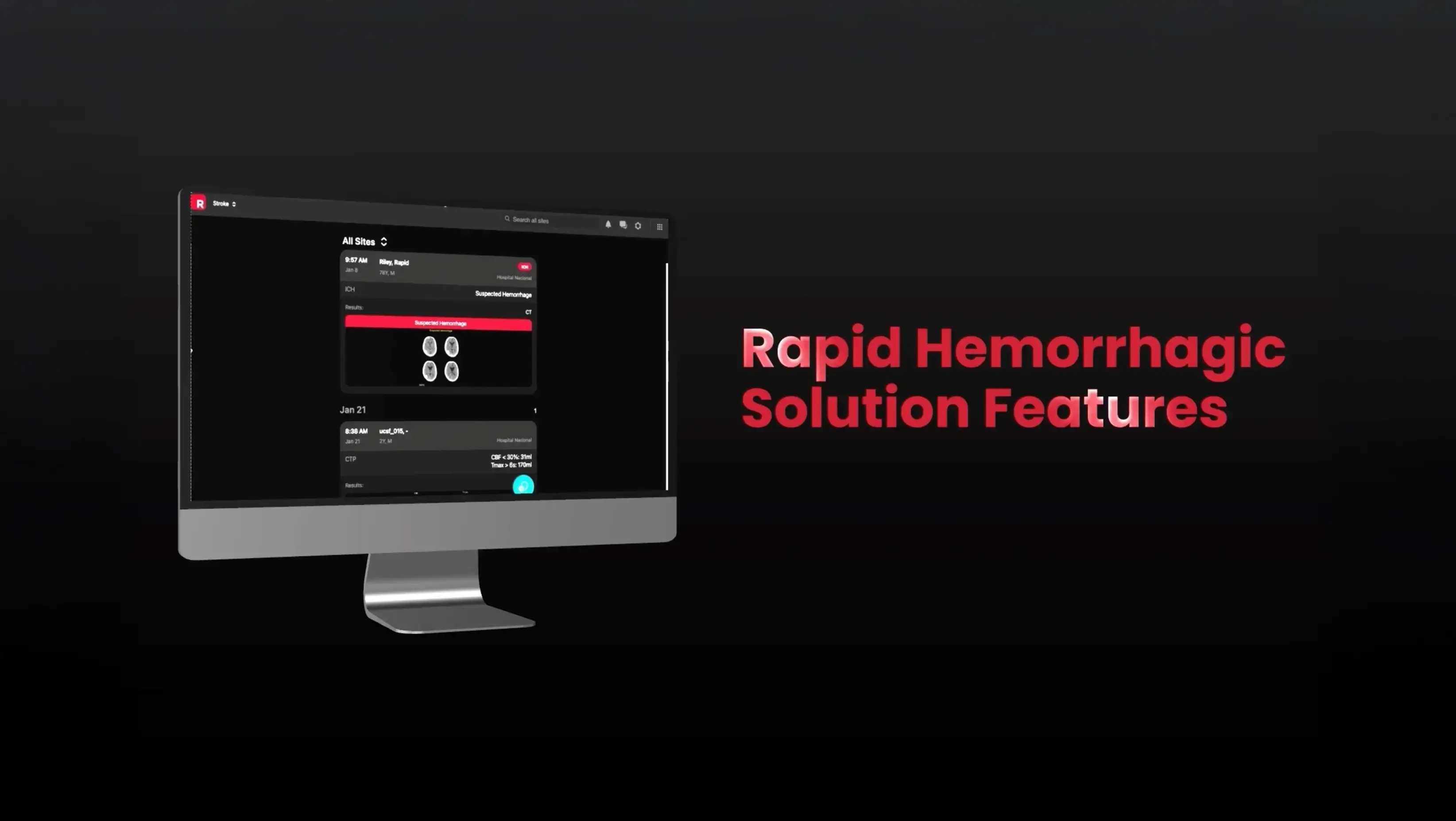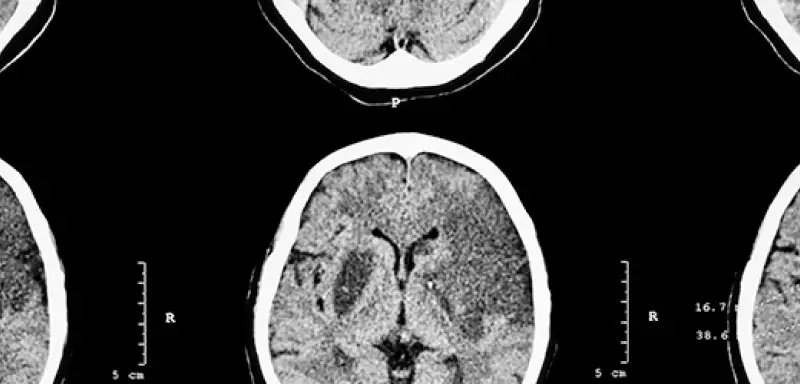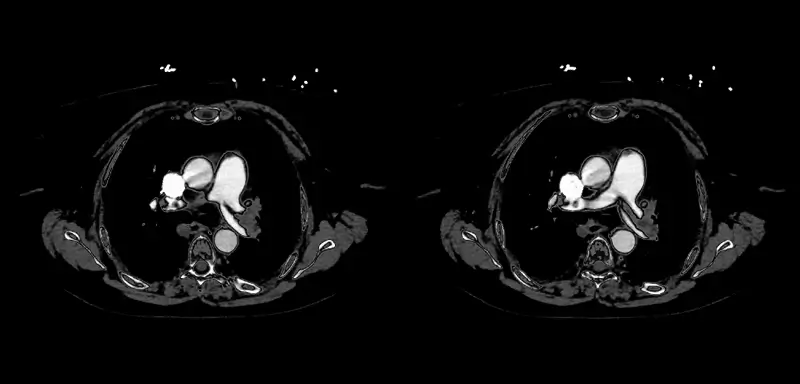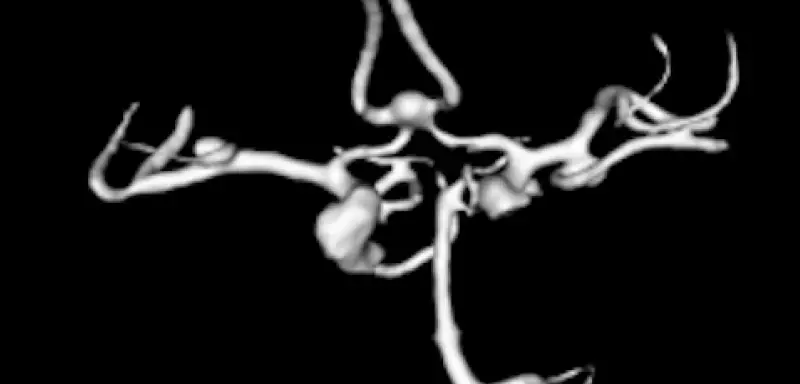Hemorrhage and Neurotrauma
Faster hemorrhagic care, everywhere
Time is brain for hemorrhage patients too. We bring AI insights to care teams across the health system.

Holistic hemorrhage + neurocritical insights
40% ICH mortality
The threat of ICH evolves beyond the bleed. Expanding hematomas, rising intracranial pressure, and midline shift rapidly worsen outcomes.
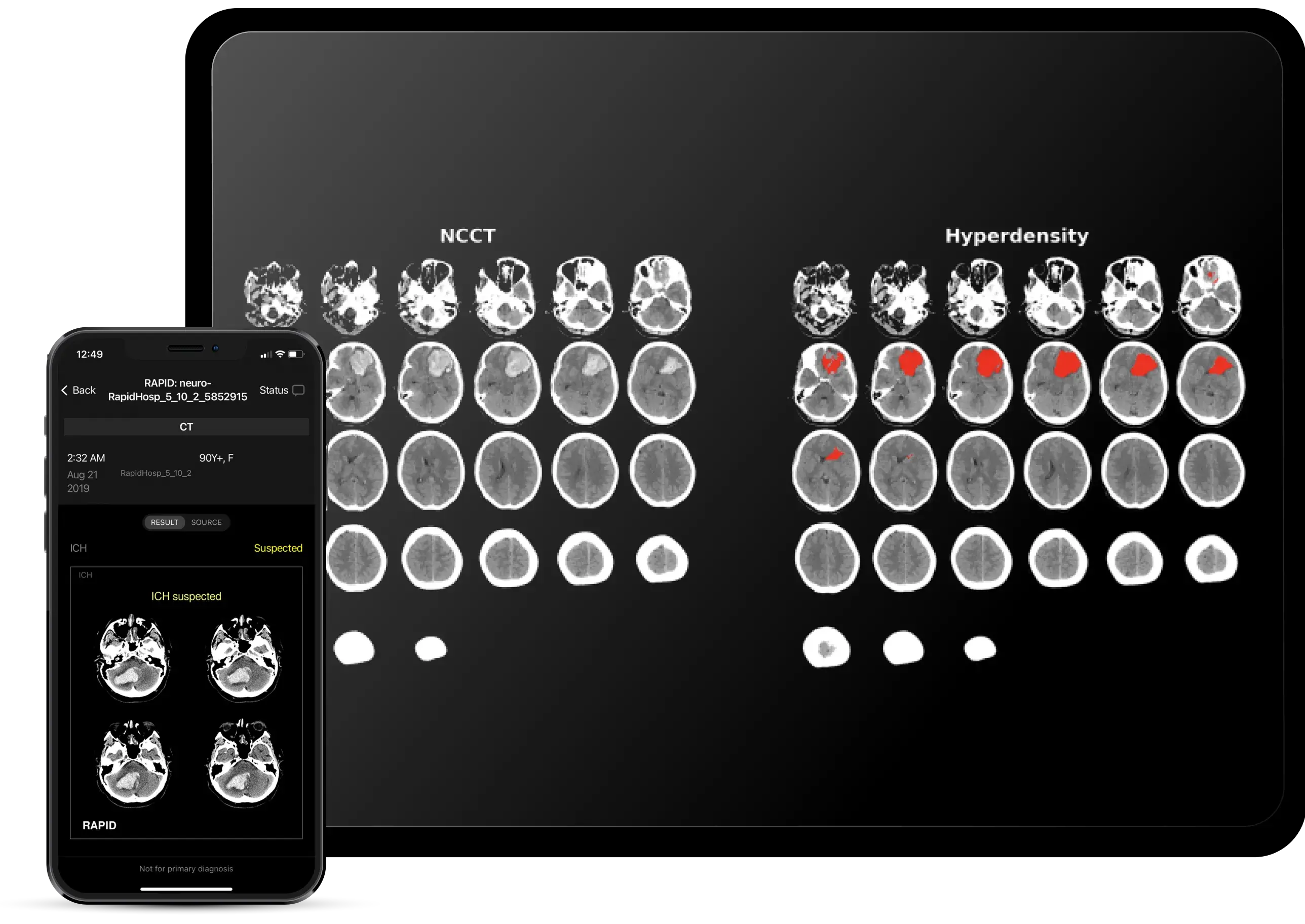
Rapid ICH: detection & measurement
Triage and hyperdensity– the dynamic duo for fast and accurate bleed assessment
Detect all acute hemorrhage types
Identify suspected intraparenchymal (IPH), intraventricular (IVH), subdural (SDH), and subarachnoid (SAH) hemorrhages
Quantify with confidence
Determine severity and volume of hematoma expansion with measurements down to 1 mL— supporting Joint Commission ICH score compliance
Accelerate care decisions
Make faster treatment and transfer decisions with notifications in a minute or less
Streamline your workflow
Custom notifications, in-app messaging, and image sharing keep teams aligned
Sensitivity
Specificity
Increase in ICH patients treated2
Improvement in Joint Commission ICH Score compliance2
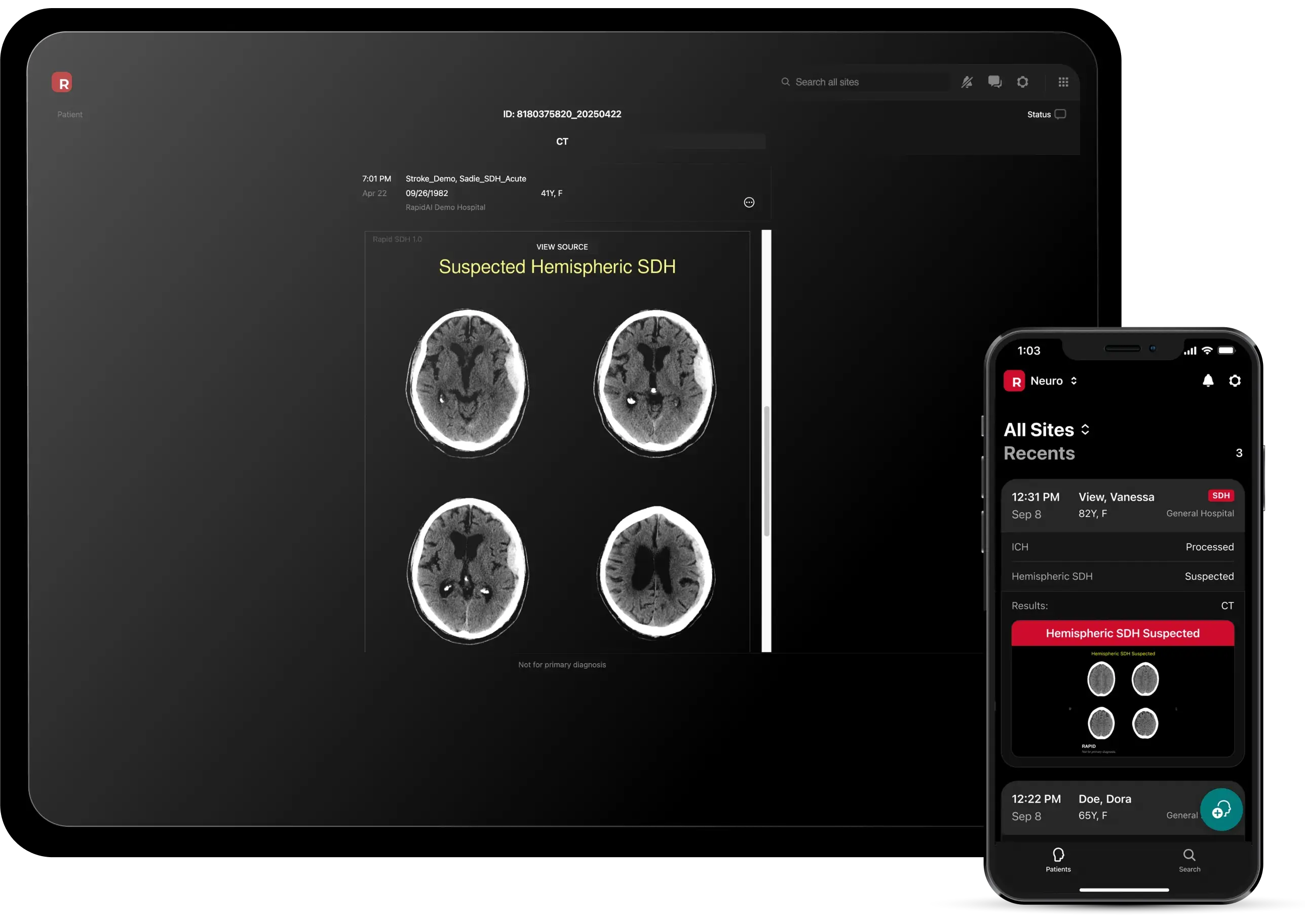
Rapid SDH
Making the subtle growth obvious with automated SDH assessment on NCCT
Detect chronic subdural hematomas
Mobile and email alerts on suspected findings in 60 seconds or less
Keep patients in your network pre- and post-intervention
Track, monitor, and facilitate referrals
Better identify treatment eligibility
As new treatment techniques enter the market, identify patients most suitable
SDH Detection
cSDH Detection
SDH Detection
cSDH Detection
Neurocritical assessment solutions
Rapid ICH + Hyperdensity
Rapid SDH
Rapid MLS
Rapid OH
Rapid DeltaFuse™

NCCT product
Rapid ICH + Hyperdensity
Triage and hyperdensity – the dynamic duo for fast and accurate bleed assessment
- Detect all suspected acute hemorrhage types – IPH, IVH, SDH, SAH
- Measure volume down to 1 mL – supporting Joint Commission ICH score compliance
- Accelerate treatment + transfer decisions with alerts
Sensitivity
Specificity
Increase in ICH patients treated2
Improvement in Joint Commission ICH Score compliance2

NCCT product
Rapid SDH
- Accelerate detection with alerts on suspected findings in 60 seconds or less
- Keep patients in your network pre- and post-intervention – track, monitor, and facilitate referrals
- Better identify treatment eligibility as new treatment techniques enter the market
SDH detection
cSDH detection

NCCT product
Rapid MLS
- Use AI to support earlier recognition of significant shifts in brain structure
- Quantify and visualize changes with objective measurements
- Accelerate care coordination and decision-making across teams
MAE4

NCCT product
Rapid OH
- Support earlier identification of cerebrospinal fluid buildup in the lateral ventricles
- Make prompt transfer decisions with automated alerts in one minute or less
- Keep care teams connected through PACS/workstation, email, and the Rapid mobile app
*Qualifies for CMS New Technology Add-on Payment (NTAP)
Sensitivity5
Specificity

NCCT Product
Rapid DeltaFuse™
- Review serial studies with improved accuracy6
- Visualize subtle and complex changes in moments
- Accelerate ICU rounding and decision-making
faster than routine practice3
Get to know Rapid in the real world
Expand the reach of your expertise
Your “wow” moment
is a click away
Sources:
-
Greenberg SM, et al. 2022 Guideline for the Management of Patients With Spontaneous Intracerebral Hemorrhage: A Guideline From the American Heart Association/American Stroke Association. Stroke. 2022 Jul;53(7):e282-e361.
-
CHI Nebraska Quality Assessment
-
https://www.asnr.org/wp-content/uploads/2025/05/ASNR25-Proceedings_OralScientific_05.01.25.pdf
- Rapid MLS: https://www.accessdata.fda.gov/cdrh_docs/pdf24/K243378.pdf
